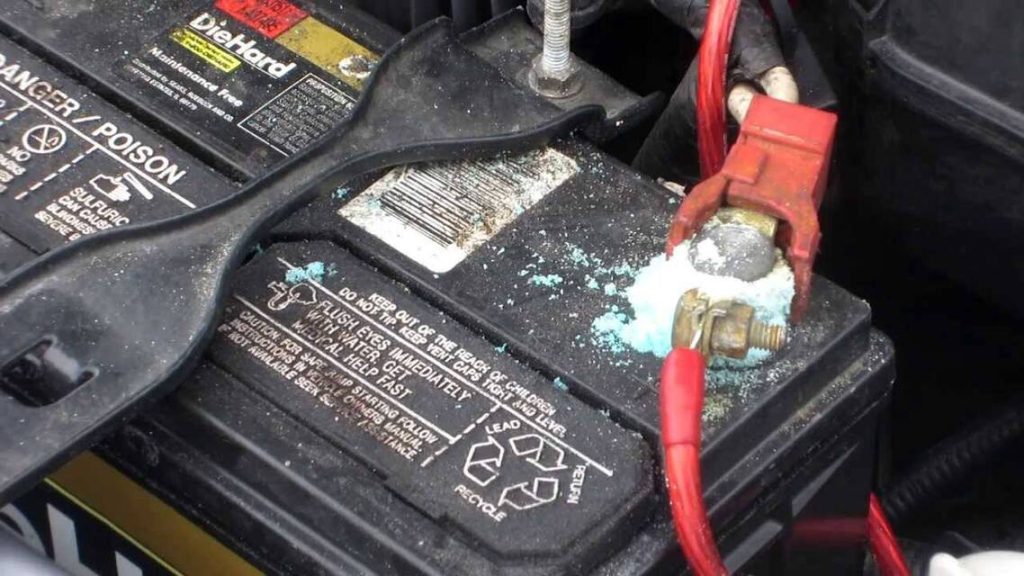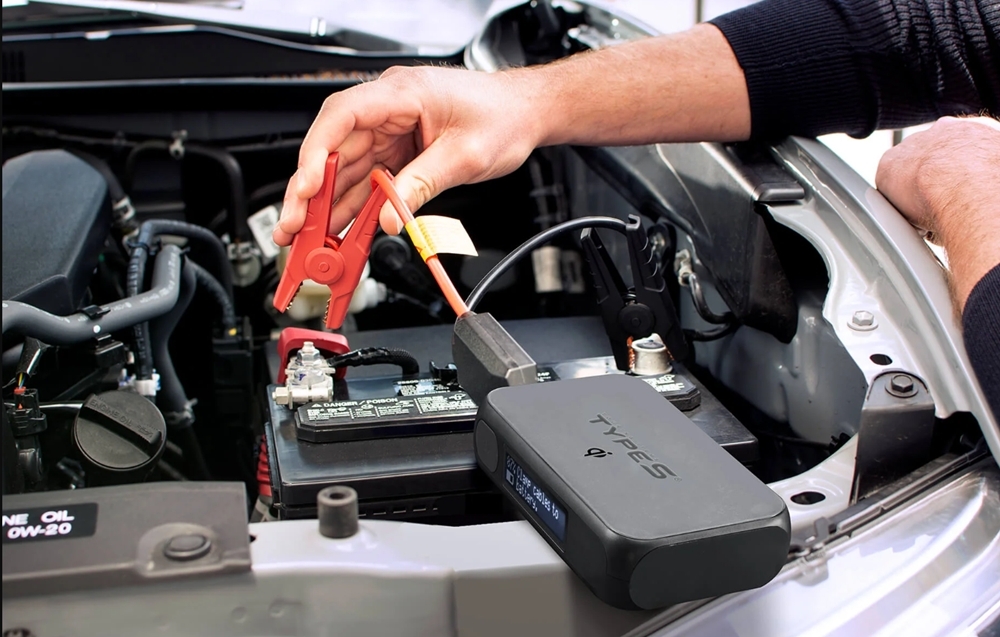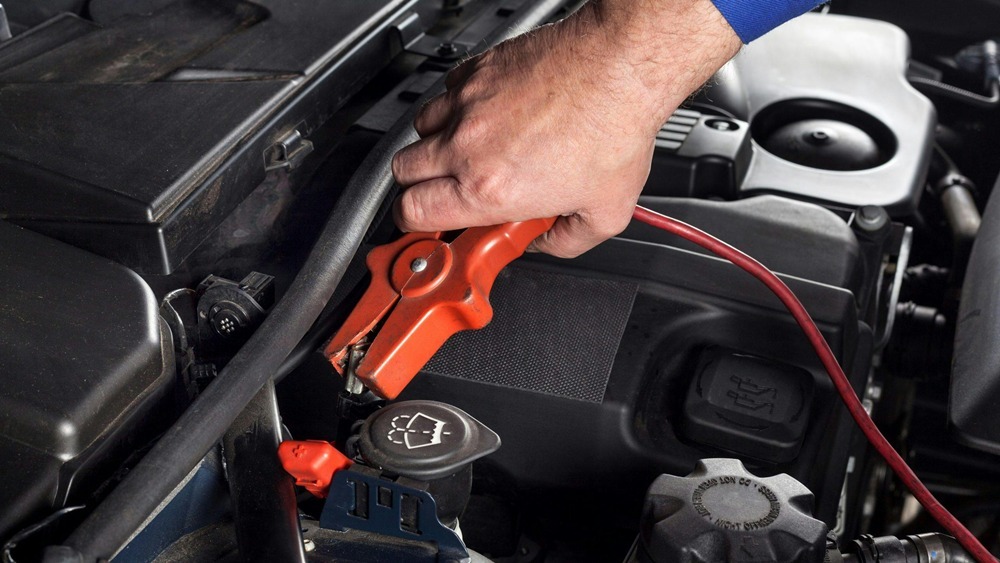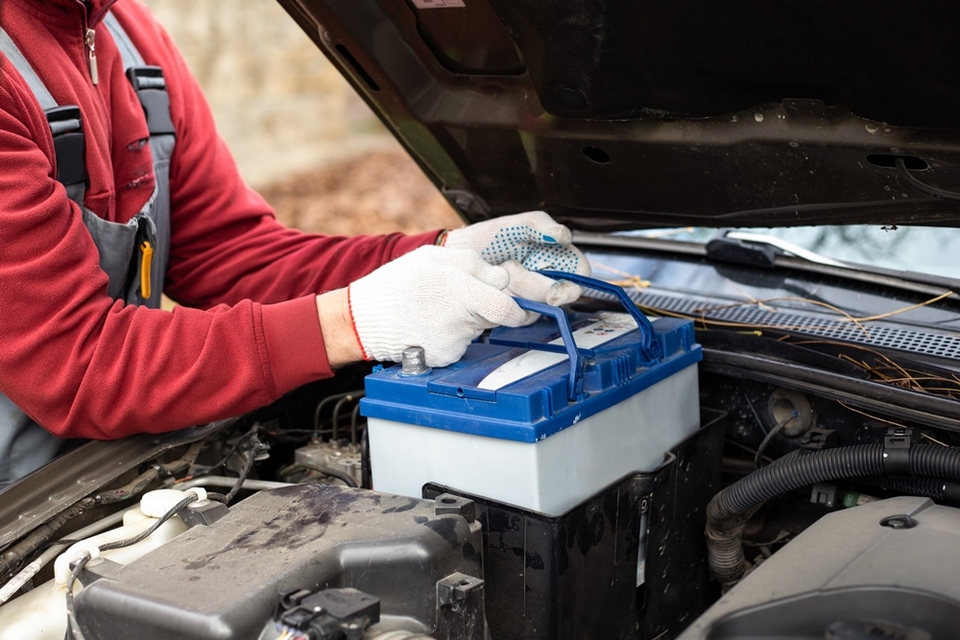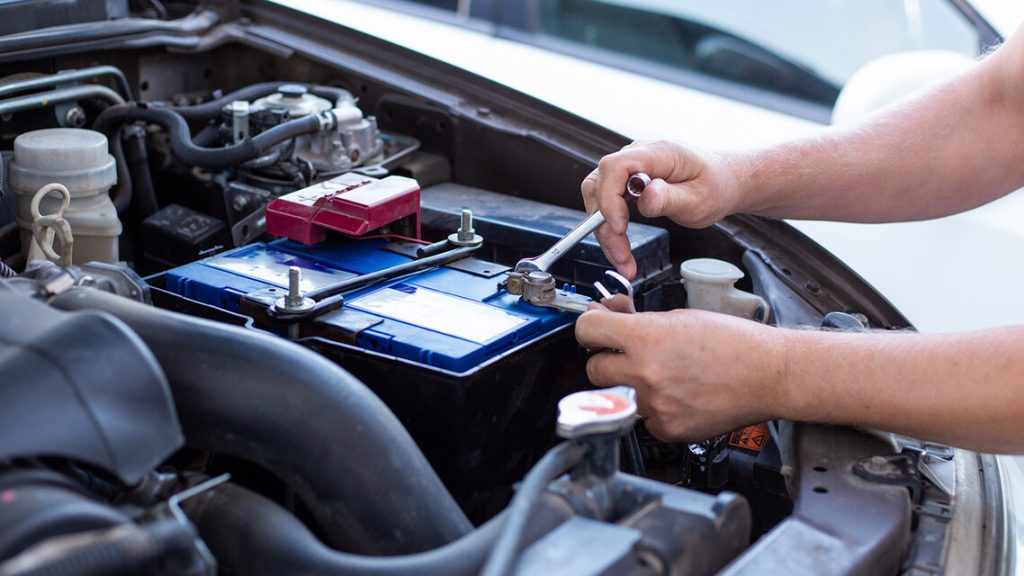Introduction: That White Stuff Might Be Killing Your Car
How to clean corrosion off car battery—it’s probably not a question you think about often, but it should be. Ever popped your hood and spotted a crusty, white or bluish gunk clinging to your battery terminals? You’re not alone. According to AAA, battery-related issues, including terminal corrosion, lead to over 1.8 million roadside service calls each year.
As someone who’s spent years helping drivers troubleshoot no-start situations, I can tell you that learning how to clean corrosion off car battery isn’t just a handy skill—it’s a preventative step that can save you from getting stranded. I’ve seen everything from dim headlights to completely dead cars, all because of neglected battery corrosion.
That chalky white or green powder might look harmless, but it’s actually corrosive residue that interferes with your battery’s ability to send power where it needs to go. The longer you ignore it, the worse your car performs—until one day, it doesn’t start at all.

The good news? You don’t need a mechanic to deal with this. In fact, knowing how to clean corrosion off car battery can empower you to fix the issue in under 30 minutes using simple tools you probably already have at home.
In this guide, I’ll walk you through everything: what causes battery corrosion, how to clean corrosion off car battery step by step, and how to prevent it from coming back. If you’re ready to get your car starting strong and running right, let’s dive in!
Also read: Top 9 Best Portable Jump Starter for Emergency Roadside Situations
Understanding Battery Terminal Corrosion: Causes and Dangers
Battery corrosion is like dental plaque for your car’s electrical system—ignore it, and you’ll pay the price. Before we dive into how to clean corrosion off car battery, it’s crucial to understand what you’re actually dealing with and why it forms in the first place.
What Exactly Is That Crusty Stuff?
That gunky buildup around your battery terminals isn’t just ugly—it’s a mix of chemical byproducts that form during normal battery use:
- White or light gray powder is usually lead sulfate or anhydrous copper sulfate.
- Greenish buildup indicates copper components are corroding.
- Blue corrosion? That’s likely copper sulfate, formed when copper reacts with leaking battery acid.
These substances build up due to one main factor: hydrogen gas. Your car battery releases it during charging, and when it escapes and reacts with the atmosphere, corrosion starts to form.
Also read: How To Jump A Car With Jumper Cables: Easy 10 step Guide
Why Does Battery Corrosion Happen?
There are several reasons your battery terminals get that nasty coating:
- Routine charging produces hydrogen gas, which reacts with air and moisture.
- Overcharging increases hydrogen release, speeding up corrosion.
- Battery acid leakage through vent caps reacts with metal terminals.
- Older batteries may leak electrolyte, exposing terminals to acid.
- Extreme temperatures, especially heat, amplify these chemical reactions.
Understanding these causes gives you better insight into how to clean corrosion off car battery effectively and why it’s important to stay ahead of it.
The Dangers of Ignoring Battery Corrosion
Letting corrosion build up isn’t just a cosmetic issue—it can actually lead to serious car troubles. Here’s what you’re risking if you don’t learn how to clean corrosion off car battery properly:
- Increased electrical resistance—your car might struggle to start.
- A stressed alternator, which can lead to premature failure.
- Spread of corrosion to nearby electrical components—hello, costly repairs.
- Unreliable starts in cold weather or after short trips.
- Battery cables damaged beyond repair.
- Potential for skin burns or clothing damage from caustic battery acid.
I once had a customer with a nearly new battery that kept going dead. It turned out a small patch of corrosion on one terminal was enough to block proper charging. After we cleaned it, the car fired up immediately—and stayed reliable. That’s how impactful even a thin layer of corrosion can be.
So if you’re wondering how to clean corrosion off car battery, just know: you’re not just cleaning—you’re potentially saving your electrical system from major damage.

Essential Safety Precautions for Cleaning Battery Acid Corrosion
Before we get hands-on with how to clean corrosion off car battery, let’s talk safety. Car batteries aren’t just blocks of power—they contain sulfuric acid and produce hydrogen gas. That combo can be dangerous if you’re not careful. So yes, safety isn’t optional—it’s essential.
Protection Gear You Absolutely Need
Before you even pop the hood, make sure you’re geared up properly. Here’s what you need to safely tackle how to clean corrosion off car battery terminals without risking injury:
- Safety glasses or goggles – Battery acid in your eyes is a serious emergency.
- Chemical-resistant gloves – Rubber or nitrile gloves are best for acid protection.
- Old clothes or coveralls – Acid can damage fabrics, so don’t wear your favorite hoodie.
- Baking soda – Neutralizes any accidental acid spills on surfaces or skin.
- Running water nearby – Just in case you need to rinse off quickly.
Before You Touch Anything
Safety starts before the first wipe. These steps are crucial before you begin cleaning:
- Turn off your vehicle completely and remove the keys from the ignition.
- Work outdoors or in a well-ventilated area to avoid buildup of hydrogen gas.
- Remove all metal jewelry—watches, rings, bracelets—to prevent accidental shorts.
- Clearly identify positive (+) and negative (-) terminals.
- Keep that clean water source nearby—better to have it and not need it.
- Have a fire extinguisher on hand—rarely needed, but always good to have.
If you skip these precautions, even a simple job like learning how to clean corrosion off car battery terminals could lead to costly or painful accidents.
Proper Battery Disconnection Procedure
Yes, the order matters—a lot! When disconnecting the battery to clean corrosion, do it wrong and you might fry your car’s electronics. Learning how to clean corrosion off car battery terminals safely starts here.
Disconnection order (ALWAYS follow this):
- Remove the negative (-) terminal first (usually black).
- Then remove the positive (+) terminal (usually red).
- Be careful that the cable ends don’t touch any metal surfaces.
Why this order? Removing the negative terminal first breaks the circuit and reduces the risk of shorting anything. I learned this lesson the hard way years ago—one wrong move cost me a $200 fuse in my car’s ECU. Trust me, that’s a mistake you only make once.
If Acid Contacts Skin or Eyes
Even if you’re being careful while learning how to clean corrosion off car battery terminals, accidents can happen. If they do:
- Skin contact: Flush immediately with cool running water for at least 15 minutes.
- Eye contact: Rinse for 20+ minutes and seek emergency medical help right away.
- Clothing: Remove contaminated items and rinse with a baking soda solution to neutralize the acid.
One more important note: Battery acid burns can take time to show symptoms. Just because it doesn’t hurt right away doesn’t mean you’re in the clear. Rinse immediately—always.
Understanding these safety steps is the foundation of safely mastering how to clean corrosion off car battery terminals. Now that you’re protected and prepped, let’s get to the actual cleaning process.
Required Materials and Tools for Effective Battery Maintenance
Knowing how to clean corrosion off car battery is only half the battle—you also need the right tools to do the job efficiently and safely. Fortunately, most of what you’ll need is probably already in your home, and any specialty items are affordable and reusable.
Essential Cleaning Supplies
Here’s your basic toolkit for learning how to clean corrosion off car battery effectively:
- Baking soda – The unsung hero of battery cleaning; it neutralizes acid and lifts corrosion.
- Clean water in a spray bottle – For rinsing and diluting your baking soda solution.
- Wire brush or a battery terminal cleaner – Crucial for scrubbing away buildup.
- Wrenches – Usually 10mm or 8mm, to loosen and tighten terminal clamps.
- Clean rags or paper towels – To wipe away grime and dry everything after cleaning.
- Petroleum jelly, dielectric grease, or terminal protectant spray – Helps prevent future corrosion.
- Small plastic container – For mixing your baking soda cleaning solution.
Optional But Super Handy
While not strictly necessary, these tools make the process of how to clean corrosion off car battery even smoother:
- Battery terminal cleaning tool – A handy gadget with built-in brushes; usually $5–$10.
- Old toothbrush – Great for getting into tight spaces.
- Battery post cleaner – That wire brush with a cone-shaped end—perfect for the posts themselves.
- Terminal shims – Useful if your connections are loose and need extra snugness.
- Disposable plastic gloves – Add a layer of protection under your regular gloves.
- Battery cleaning spray – A commercial alternative to DIY solutions.
- Anti-corrosion felt washers or terminal protectors – Slip onto terminals to reduce future corrosion.
DIY Cleaning Solution Recipe
If you prefer to go the homemade route (and save some money), here’s a tried-and-true cleaning mix:
- 1 tablespoon of baking soda
- 1 cup of warm water
Mix until dissolved. The solution should be cloudy but not too thick. It works wonders on corrosion and is completely safe for battery surfaces.
Budget-Friendly Alternatives
Wondering how to clean corrosion off car battery without buying specialized tools? You’re in luck:
- Old toothbrush = budget terminal brush.
- Sandpaper = solid substitute for a wire brush on light corrosion.
- Petroleum jelly = inexpensive alternative to terminal protectant sprays.
Personally, I keep all these items stored in a small plastic container labeled “Battery Cleaning Kit” in my garage. Having everything in one place makes regular battery maintenance a breeze. When it’s time to clean, I just grab the kit and get to work—no last-minute searching for tools.
Once you’re equipped, you’re well on your way to mastering how to clean corrosion off car battery like a pro. Next up, let’s walk through the actual cleaning steps.

Step-by-Step Guide: How to Clean Corrosion Off Car Battery
Now that we’ve covered safety and gathered the right tools, let’s walk through exactly how to clean corrosion off car battery—step-by-step. This guide is designed to be so straightforward you could follow it in your driveway, just like I’d show a friend in my garage.
Preparation and Inspection
Before diving into the actual cleaning process, take a few moments to get set up:
- Make sure your vehicle is completely off and the keys are removed.
- Put on your safety glasses and gloves—you’ll thank yourself later.
- Open and secure the hood to keep it stable while you work.
- Locate and inspect both battery terminals for signs of corrosion.
- Check for cracks or bulges in the battery case.
- Snap a quick “before” photo—optional, but it’s always nice to see the improvement afterward.
The Cleaning Process
Step 1: Disconnect the Battery Terminals
The first step in how to clean corrosion off car battery safely is proper disconnection:
- Always start with the negative (-) terminal, usually black.
- Loosen the clamp using a wrench (typically 10mm or 8mm), but don’t remove the bolt completely.
- Twist gently and pull upward to remove the terminal.
- Secure the cable away from metal surfaces.
- Repeat the process for the positive (+) terminal, usually red.
This prevents any electrical shorts or sparks while you’re working.
Step 2: Inspect the Corrosion
With the terminals removed:
- Take a close look at how far the corrosion has spread.
- Check inside the clamps—gunk often hides there.
- Examine the posts—you’ll want to know if they need deeper scrubbing.
Knowing the full extent of the damage helps you clean more effectively.
Step 3: Apply the Cleaning Solution
Here’s where the magic happens. One of the most important parts of learning how to clean corrosion off car battery is using the right solution:
- Spray or pour your baking soda and water solution directly on the corrosion.
- Watch for fizzing—that’s a good sign the acid is being neutralized.
- Let the solution sit for 2–3 minutes.
- For extra stubborn buildup, mix a thicker paste and apply it directly to corroded areas.
Step 4: Scrub the Terminals and Posts
Time to get scrubbing!
- Use a wire brush to scrub corrosion off the battery posts.
- Use a toothbrush or terminal cleaner to scrub the inside of the terminal clamps.
- Apply moderate pressure—enough to clean but not damage the battery.
- Don’t forget to clean the underside of the clamps and cable ends.
Repeat the process until all the crusty white, green, or blue corrosion is gone.
Step 5: Clean Surrounding Areas
Knowing how to clean corrosion off car battery includes cleaning beyond just the terminals:
- Wipe down the battery case, especially if acid has leaked.
- Check and clean the battery tray and hold-down clamp.
- Examine the battery cables—corrosion can creep down under the insulation.
This extra step helps prevent future problems.
Step 6: Rinse and Dry Everything
Now that everything is clean:
- Rinse the area with a small amount of clean water to remove leftover residue.
- Wipe everything dry using clean towels or paper towels.
- If you have compressed air, use it to dry tight spaces.
- Let all parts air-dry for 5–10 minutes to ensure no moisture lingers.
Drying thoroughly is crucial before reconnecting anything—moisture can cause renewed corrosion or electrical shorts.
I once worked on a pickup truck where the corrosion was so bad, the post cleaner wouldn’t even fit over the terminal. After 20 minutes of scrubbing and several rounds of baking soda solution, those terminals looked brand new. The difference was night and day—the truck went from weak starts to firing up instantly.
Once you’ve completed this process, you’ll not only know how to clean corrosion off car battery, but you’ll also see the performance benefits firsthand.

Alternative Cleaning Methods
So, you’ve tried the baking soda solution and it’s just not cutting it? No problem—there’s more than one way to handle the job. Whether you’re out of supplies or dealing with extreme buildup, here are some reliable alternatives to how to clean corrosion off car battery with different approaches:
The Cola Method
Believe it or not, your can of soda might come in handy:
- Pour regular cola (not diet) directly over the battery terminals.
- The phosphoric acid in cola helps dissolve corrosion.
- After a few minutes, scrub gently and rinse thoroughly with clean water to remove any sticky residue.
It’s a quirky trick, but it works surprisingly well in a pinch.
Commercial Cleaners
Specialized battery terminal cleaners are available at auto parts stores:
- Some products, like “Battery Cleaner with Acid Detector,” actually change color when acid is present.
- These cleaners are designed specifically for how to clean corrosion off car battery with maximum efficiency.
- Just spray, let sit, scrub, and rinse according to the instructions.
They’re especially effective for more stubborn corrosion and give peace of mind when DIY solutions fall short.
Hot Water Technique
If corrosion is really clinging on:
- Boil water and let it cool slightly (don’t use boiling water—too risky).
- Carefully pour hot water over the corroded areas after applying baking soda.
- This helps soften tough deposits and improves chemical breakdown.
This method is a favorite of old-school mechanics and works wonders on heavily built-up terminals.
Advanced Techniques for Cleaning Car Battery Terminals
If you’re serious about maximizing your battery’s performance, or if you’re dealing with severe corrosion, here’s a more advanced take on how to clean corrosion off car battery—especially useful for long-neglected systems.
Deep Cleaning Terminal Connections
Sometimes a surface clean isn’t enough. For a truly effective clean:
Terminal post restoration:
- Use a rotating battery post cleaner tool to remove buildup from all angles.
- Focus on the base of the terminal post, where corrosion hides.
- Keep cleaning until you see bright, shiny metal all around.
Cable end revival:
- Use a terminal brush to scrub inside the cable clamps.
- For side-post batteries, scrub bolt holes with a small wire brush.
- If corrosion is thick, use fine sandpaper to smooth and restore metal contact.
- Check for any fraying or cracking in the cable—this might require replacement.
Testing your connections:
- After everything’s clean, test for a snug fit—no wiggle!
- If you have a multimeter, test voltage drop across terminals; ideally, it should be minimal.
- Solid connections are key to a reliable electrical system.
Special Considerations for Different Battery Types
When learning how to clean corrosion off car battery, keep in mind that not all batteries are the same. These extra tips will help depending on your specific battery type:
Side-post Batteries
- These don’t have traditional posts—they have threaded holes.
- Use a wire brush to clean the inside threads.
- Brush the bolts with an old toothbrush.
- Add anti-seize compound to the threads before reinstalling.
Maintenance-Free Batteries
- While they vent less acid, corrosion can still form at the terminals.
- Be very gentle not to damage any case seals.
- Focus only on the metal terminal connection areas.
Marine Batteries
- Marine batteries are especially prone to corrosion due to humidity and salt air.
- Use marine-specific terminal protectors and apply a protective coating regularly.
- More frequent maintenance is often necessary here.
I once helped a boat owner who hadn’t cleaned his battery terminals in over a year—the corrosion was so intense the ends had to be cut off and replaced. Now, he swears by monthly checks and hasn’t had a single problem since. When it comes to how to clean corrosion off car battery, regular maintenance is the real MVP.

Reconnecting with Proper Technique
The way you reconnect your battery terminals after cleaning matters more than you might think. It’s the final step in how to clean corrosion off car battery properly:
- Make sure everything is completely dry—moisture invites corrosion back.
- Apply a thin coat of petroleum jelly or terminal protectant to posts and clamps.
- Connect the positive (+) terminal first.
- Then connect the negative (-) terminal.
- Tighten until secure—not too tight, or you risk damaging the posts.
- Wiggle the terminals to ensure they’re snug and solid.
- Finish with a final layer of protectant or use anti-corrosion felt washers.
Knowing how to clean corrosion off car battery isn’t just about removing the crust—it’s about doing it right, safely, and with prevention in mind. Follow these methods, and your battery will be cleaner, safer, and more dependable for the long haul.
Proven Methods to Prevent Battery Terminal Corrosion
So, you’ve just learned how to clean corrosion off car battery terminals and put in the elbow grease to get them looking brand new. The last thing you want is to redo the job in a few months. Luckily, preventing corrosion is easy with a few smart strategies. Here’s how to lock in that clean finish and extend your battery’s lifespan.
Immediate Protection After Cleaning
After you’ve finished cleaning, apply protection before reconnecting your battery terminals to keep corrosion at bay. These are tried-and-true options:
Option 1: Petroleum Jelly (Vaseline)
This budget-friendly classic is more effective than it gets credit for.
- Apply a thick coating of petroleum jelly to both terminals and inside the connector clamps after reconnection.
- It forms a moisture-resistant seal that blocks air and humidity.
- Reapply every 6–12 months or after you’ve cleaned the terminals again.
It’s simple, cheap, and gets the job done surprisingly well.
Option 2: Dielectric Grease
If you’re serious about preventing corrosion long-term:
- Use dielectric grease, which is designed specifically for electrical systems.
- Apply a thin layer on the battery terminals and inside the clamps.
- It creates a superior moisture barrier while maintaining proper conductivity.
- You’ll find it at any auto parts store, and it lasts longer than petroleum jelly.
When discussing how to clean corrosion off car battery, this is the professional’s choice for prevention.
Option 3: Commercial Battery Terminal Protectants
These spray-on solutions are specifically formulated to prevent future corrosion.
- Look for products like CRC Battery Terminal Protector or Permatex Battery Protector & Sealer.
- They create a durable, waxy film that protects the terminals from acid fumes and moisture.
- Some sprays even change color over time to let you know when it’s time for a reapplication.
- A single treatment can last over 12 months.
This is a great solution if you prefer quick and even application.
Option 4: Battery Terminal Protectors (Felt Washers)
These physical protectors sit under your terminal connectors and slowly release anti-corrosion chemicals:
- Made from felt or foam, they’re soaked in corrosion inhibitors.
- Install them over each terminal post before reconnecting the cable clamps.
- Easy to install and cost-effective (around $2–$5 for a pair).
- Replace them during your next scheduled cleaning.
For those learning how to clean corrosion off car battery and prevent it in the future, felt washers are an excellent add-on.
Combo Approach = Maximum Protection
Want bulletproof protection? Combine two methods:
- Use dielectric grease or petroleum jelly on the terminal posts and inside the clamps.
- Then, add felt terminal protectors for physical protection and extended corrosion resistance.
I personally use this combo on my daily driver. After cleaning the terminals three years ago and applying both dielectric grease and felt washers, I haven’t needed to touch them since. No corrosion. No false starts. Just smooth driving.
Learning how to clean corrosion off car battery terminals is only half the battle—keeping them clean is what really saves you time, money, and headaches. Preventative care is easy and far less messy than repeated cleanings.
Battery Maintenance Schedule for Ongoing Protection
You’ve tackled the job and learned how to clean corrosion off car battery terminals—great! But staying ahead of corrosion is all about consistency. Setting up a simple battery maintenance routine ensures your terminals stay clean, your car stays reliable, and your wallet avoids surprise repairs.
Here’s a practical schedule you can follow:
Monthly Checks: Catch Corrosion Early
A quick look once a month can save you a ton of trouble down the road.
- Inspect terminals for early signs of buildup—look for white, green, or bluish powder.
- Check for loose connections. Battery cables should be snug—if you can wiggle them, they need tightening.
- Examine the battery case for bulging, cracks, or leaks. Any deformity is a red flag.
These quick monthly checks can alert you before problems get serious.
Quarterly Maintenance: Light Cleaning and Prevention
Every 3 months, go a step further to stop corrosion from creeping back in.
- Clean minor corrosion with a small amount of baking soda solution and a rag.
- If your protective coating is wearing thin, reapply petroleum jelly, dielectric grease, or a terminal protectant spray.
- Check the battery hold-down bracket to make sure it’s tight. A loose battery can vibrate, causing acid leaks and connection issues.
- Wipe down the battery top—a clean surface reduces the chances of stray voltage and short circuits.
This is also a great time to refresh your memory on how to clean corrosion off car battery connections, just in case buildup is starting to return.
Annual Overhaul: Go All-In Once a Year
Once a year, do a full battery maintenance routine—even if your terminals look spotless.
- Perform a complete terminal cleaning, just like when you first learned how to clean corrosion off car battery terminals.
- Reapply protective compounds like dielectric grease or felt washers for maximum corrosion prevention.
- Get a battery load test at an auto parts store or with a multimeter to check your battery’s strength.
- Request a charging system check (most auto stores offer this for free) to ensure your alternator isn’t overcharging and accelerating corrosion.
Doing a deep clean and full system check yearly will dramatically reduce the chances of unexpected failures and keep your battery performing at its best.
A little consistency goes a long way. If you make these maintenance steps part of your regular car care, you won’t just know how to clean corrosion off car battery terminals—you’ll rarely have to do it again.
Need a mechanic? Find one on the Mobile Mechanic Directory

FAQ: Battery Maintenance and Corrosion Prevention
Q: Is battery corrosion dangerous to touch?
A: Yes! Battery corrosion contains sulfuric acid that can burn skin and damage eyes. Always wear protective gloves and eyewear when handling it.
Q: Can I drive with corroded battery terminals?
A: While it’s possible, it’s risky. Corrosion increases electrical resistance, makes starting harder, and can damage the charging system. It may leave you stranded without warning.
Q: How often should I clean my car battery terminals?
A: For best results, check monthly and clean every 6–12 months. In hot climates or with older batteries, clean every 3–6 months. Learning how to clean corrosion off car battery terminals properly helps extend battery life and prevent future issues.
Q: Does battery corrosion mean I need a new battery?
A: Not always. Corrosion can happen even with good batteries. However, if it returns quickly after cleaning, or if the battery is over 4–5 years old, replacement might be the smarter option.
Q: What’s the difference between white and blue/green corrosion?
A: White buildup usually comes from lead terminal reactions. Blue or green corrosion often indicates a copper component reaction. No matter the color, learning how to clean corrosion off car battery connections is essential to prevent further damage.
Battery Cleaning Specifics
Q: Can I use Coca-Cola to clean battery terminals?
A: Yes! The phosphoric acid in cola can dissolve corrosion. Pour it on the terminals, let it fizz, then rinse with water and dry completely. Still, how to clean corrosion off car battery safely with baking soda remains the most recommended method.
Q: Will my car’s computer reset if I disconnect the battery?
A: It might. Modern vehicles can lose radio presets, clock settings, and even adaptive transmission data. You may notice a brief relearning period after reconnection.
Q: Should I disconnect both terminals when cleaning?
A: Absolutely. Always disconnect both, starting with the negative terminal. It’s a key step in how to clean corrosion off car battery safely and avoid short circuits.
Q: Are battery terminal cleaners better than baking soda?
A: Commercial cleaners work faster and change color when acid is present. However, baking soda is a budget-friendly option that works just as well with proper scrubbing.
Conclusion: Keep Your Battery Clean, Your Car Reliable
Knowing how to clean corrosion off car battery terminals isn’t just about looks—it’s about keeping your car starting strong and protecting your electrical system. A little maintenance goes a long way toward avoiding costly problems down the road.
Quick Battery Care Plan:
- Inspect monthly for corrosion or loose connections
- Clean promptly using proven methods when buildup appears
- Protect terminals with grease, spray, or felt washers after every cleaning
- Watch performance for slow starts or electrical glitches
- Stay stocked with basic cleaning tools in your garage or trunk
A well-maintained battery means fewer surprises, especially in bad weather or remote areas. Clean connections = reliable starts.
Have a tip or trick about how to clean corrosion off car battery? Send it to us via email!

